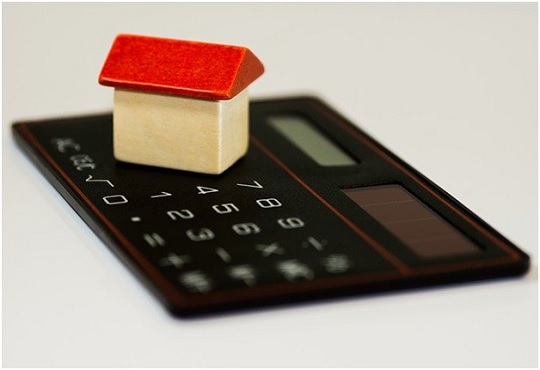What Is Refinansiere
cioreviewindia Team | Monday, 20 December 2021, 12:07 IST
 While there might be a few people who don't struggle with their monthly expenses, maybe they're quite comfortable; still, everyone would indeed like to save a few dollars if there were a convenient way to do so. No one wants to spend money needlessly.
While there might be a few people who don't struggle with their monthly expenses, maybe they're quite comfortable; still, everyone would indeed like to save a few dollars if there were a convenient way to do so. No one wants to spend money needlessly.
That brings us to the question hva er refinansiering (translation: what is refinancing), and is it beneficial to take this step in every situation? The act of refinancing in any scenario is paying off a current loan only to replace it with another that in some way offers better value.
In the case of a mortgage, a homeowner could receive a lower interest rate, a shorter mortgage term, changing to a fixed rate from an adjustable, or borrow from the home's equity.
It's wise to put considerable thought into the decision before making a move since the process can be time-intensive, costly, and require nearly as much effort as a first mortgage.
If changing from an adjustable to a fixed rate, there can be benefits if you intend on staying in the home for an extended time and depending on the current rates. Borrowing from the equity or even debt consolidation has its drawbacks since these can ultimately lead to a greater cycle of debt.
Primarily refinancing for a lower interest rate is ideal, and when these drop, it's a good idea to shorten the term, so overall, the cost of the loan for its lifetime is less.
Refinansiere
Refinancing a mortgage allows a homeowner to get a better interest rate than the original loan potentially. It means replacing the previous loan with one that offers more favorable conditions. Read here to learn the ins and outs of what refinancing is.
Homeowners need to put considerable planning and forethought into it since the many variables can result in only a slight overall difference making the expensive, time-consuming process not worth the effort.
It depends on whether you will save enough money if you take the step. It's essential to not only look at the rates but the costs associated with refinance and if you intend to stay in the home long enough to see savings.
The suggestion is to hold out for an interest rate difference of 2%. Other experts say 1% is sufficient, but the idea is to have a considerable cost saving somewhere, whether it be the monthly repayments or the overall cost of the loan. Some of the benefits of refinancing if the conditions are adequate include:
â—A better interest rate than the original loan
When interest rates drop, homeowners turn to refinance in droves to get more favorable terms than their original mortgage. There are considerations, of course, when you have a house, including how long you intend to live there, how much longer you owe on the home, and if the rate is substantial enough to make a sufficient difference worth putting forth the expense and effort involved in the process.
If done under the right conditions, a lowered rate should save significant money in a term. However, a homeowner with improved credit doesn't need to wait on better interest rates to refinance.
Typically with a better credit score, homeowners have the opportunity for refinancing with better terms simply because they improved their credit rating. Credit can have a substantial impact when you go for a mortgage making the rates higher for those with less-than-ideal scores.
Most people work to make improvements precisely so they can at some point restructure the loan for more favorable terms.

â—Monthly payments
The mortgage repayment cost is typically the most significant expense people owe each month. It can grossly hinder a lifestyle, offering most people minimal extra cash for other expenses, entertainment, or in case of emergency.
When you take the opportunity to restructure the loan, there's the likelihood that the monthly repayment amount will be reduced substantially.
In this scenario, you will increase the term so the payments would pay less towards the principal amount, which means you would then have higher expenses over the loan's lifetime.
A financial advisor will guide you through the various scenarios to see what your options will be and make an educated decision as to whether this is a sound financial choice.
â—Decreasing the term of the loan
Instead of increasing the loan term, some people opt to shorten the loan duration. Rather than paying for a 30-year mortgage which is relatively standard for most homeowners, the restructured loan would be set up for 15-years.
As a whole, over the lifetime of this new loan, you can save a wealth of money and ultimately pay the balance off in a much faster period of time with a lower interest rate.
The trade-off with this scenario is your monthly payment will increase. It would be best if you considered that the increase might not be significant depending on the interest rate you can acquire and the total amount of the loan.
You could have a very slight difference factoring in the variable. It is an ideal refinancing scenario to take advantage of with the right conditions.
â—Adjustable vs. Fixed rate
An adjustable-rate mortgage or ARM is often what mortgage holders start with when signing on for a home loan. That's generally the recommendation since homeowners can take advantage of rates as they fluctuate.
When you lock in at a fixed right, you're stuck there, leaving you unable to benefit when the rates drop. There's a downside to everything, and with adjustable rates, your monthly mortgage payment is seldom the same because of the rate fluctuations, and while these can fall, they can also soar.
After a period of time, homeowners look at refinancing with a low-interest rate and do so by locking in using a fixed mortgage. That way, there are no longer fluctuations in their premiums, and they can better budget their finances. It may or may not save money, but it decreases the headache of not knowing what your monthly expenses are going to entail
â—Borrowing or consolidating
Some people refinance their homes to take advantage of the equity or the value the house is accumulating. That leaves a homeowner with two (sometimes more, depending on how many times you do it) mortgages.
When borrowing against the house, individuals will either do major renovations to the property, make extravagant purchases, pay for their child's college tuition, or consolidate debt.
You can use the funds for virtually anything, with the amount taken being added to the principal for your refinanced loan. Borrowing in this way can be more cost-effective than other lines of credit or consumer loans, depending on how much equity you have and, of course, the rates.
The downside for this is the potential for putting your finances at risk of possibly adding more debt on top of the extra monthly repayment, especially if you've used the money to consolidate debt. The addition of a "second mortgage" adds considerably to your monthly debt.
It's a slippery slope if you should refinance your mortgage in this way. Some people refuse to touch the equity in their home; others will take out two, three, and sometimes more mortgages.
Again, many variables go into deciding, especially considering the length of time you intend to be in the home. Rest assured, with multiple mortgages; it could prove tough to resale for the value taken out if you borrow from the equity numerous times.
What Should You Consider Before Refinancing A Home Mortgage
Whether taking the option to refinance your home mortgage makes financial sense in your particular situation depends largely on your overall goals, your current financial circumstances, and the conditions and opportunities that are available to you at the moment.
The first thing a homeowner always wants to be aware of is the credit score because this will significantly impact the loan and the rates you receive. If you received higher rates the first time due to poor credit, but it's improved since then, it's wise to do it.
If it’.s relatively the same, lenders will still likely give you less than favorable loan conditions to lessen their risk. They will also consider your debt-to-income ratio or the amount you owe vs. the amount of your income.
The refinancing process is nearly as involved as the original mortgage process, inclusive of fees, expenses, documentation, and as far as tax implications. Factoring the time, expense, and effort involved along with where the rates are and the term you intend, it's essential to determine your ultimate cost savings and whether refinancing is a financially sensible move under those circumstances.
Final Thought
The suggestion is that if a homeowner doesn't see a savings of more than a couple hundred dollars and probably a 2% (some experts say 1% is sufficient) drop in interest, the restructure won't be beneficial as a whole.
There are variables and a few scenarios that mortgage holders should discuss with their financial advisor, who can guide the process to see if refinancing is a viable option for you.




